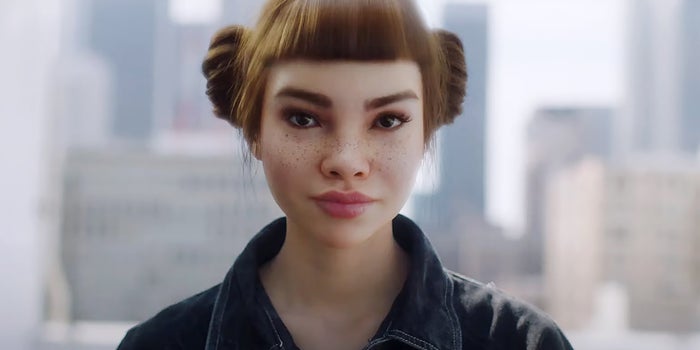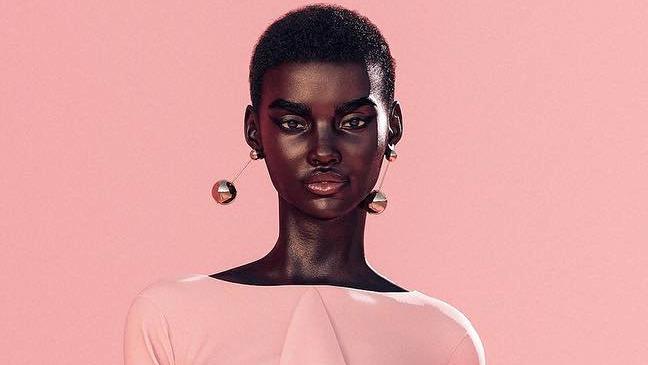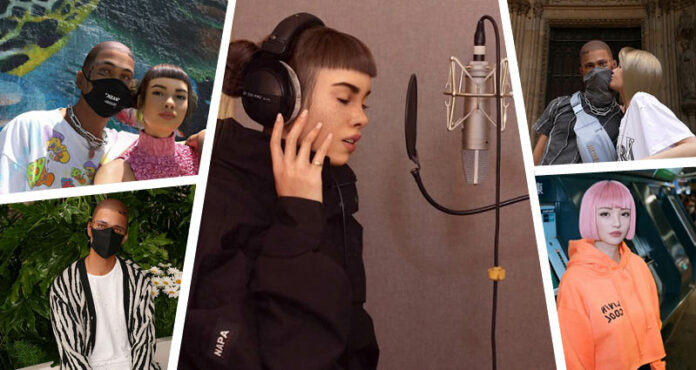By Panagiota Katsaveli,
In the modern workplace, many new career opportunities have appeared in various new and constantly developing fields. Even though this seems like a great development for humankind, it has also led to the extinction of other occupations and their replacement by technological substitutes. One unconventional occupation that has flourished in the 21st century, mainly due to the rise of social media networks is that of influencers; internet personas sharing updates and details of their life combined with fashion trends and the promise of an easygoing life. The influencer market has also added to its dynamic and virtual personas who challenge humans and benefit companies to a greater extent.
The creation of virtual influencers or CGI influencers, as they are alternatively called, can be traced back to artificial intelligence and to the Los Angeles based start-up company ‘Brud’. Behind each influencer persona, a whole team of technicians, designers, artists and content creators work in order to present a result as human-like as possible. The team is responsible for every move of these influencers; they choose who they interact with, what they post, which brands they promote and obviously they are the ones keeping the money their influencers make. The creators use motion capture to make their masterpieces look, sound and move in a realistic manner. Some of their creations use actual human bodies with the addition of a CG-made face. These influencers, furthermore, live a more interesting life than actual human beings since they can give concerts, attend fashion shows and travel by simply editing them in front of the appropriate backdrop even during the difficult Covid-19 era the world experiences. Truly, technology and artificial intelligence have advanced to such an extent making this development tangible.
The use of a virtual influencer as part of a company’s marketing plan has many benefits compared to the traditional influencers that the public has been used to so far. Firstly, it provides the company with more control over the content uploaded. Virtual influencers are CGI creations being operated by technicians, so the company utilizing them has complete creative control over the posts their accounts make while promoting their products; they can control, form and change them in order to align with the message, the products and the policies of their company to reach their goals. By making this choice, a company can also save time since they do not need to choose between the massive number of influencers available. Every influencer is a unique human being who conducts the search for the ideal representative of a company, a difficult and time-consuming task, while in comparison the number of virtual influencers is thus far limited. Lastly, the risk involved in the collaboration with a CGI creation is non-existent. Companies want to keep a good name and they crave for the public’s approval, but this is not easy when working with human influencers since they can get involved in scandals or make statement that draw negative publicity; this is not the case with virtual influencers.

Among all the virtual influencers created and available for people to enjoy and for companies to choose from, some have obviously stood out catching people’s attention worldwide. The most well-known virtual influencer answers to the name Lil Miquela, was created in 2018 by the company Brud and quickly established herself across different social media platforms including Instagram and Twitter. The 19-year-old digital persona has worked with famous companies like Prada, Calvin Klein and she has supported many movements, like the BLM one, or advocated for the rights of refugees and the LGBTQ+ community. Another virtual influencer, who unlike the others, does not intent to resemble human beings is called Noonoouri; she is a 19-year-old, 1.50 cm tall doll who lives in Paris. The doll-looking creation was made by the German designer Jörg Zuber in 2018 and works with high-end designer brands while promoting a vegan lifestyle and sustainable way of living among others. Another great example of the digital era and very closely related to the idea of a virtual influencer is the very first digital supermodel created in 2017 by a British photographer known as Shudu.gram. She has worked with many fashion brands who want to promote their products by sending her free samples to promote digitally and she has even participated in major fashion events in addition to a Vogue feature.
Even though the appearance of virtual influencers in the marketing and advertising industry has been considered a novelty and an outstanding achievement, the creation itself creates many dangers and tricky spots for companies who decide to utilize them. A big concern that many social media users have raised about virtual influencers is the honesty and authenticity involved; these computer-generated creations portray realistic fabricated human-like creatures, but if it becomes impossible to distinguish them from humans, does this follow a company’s policy regarding honesty and authenticity? Furthermore, research has proved that virtual influencers are a more appealing marketing technique when dealing with young, online consumers and hence would be an unacceptable option for those older target audiences. Each company needs to keep in mind their target audience before making a decision that could be false and costly. Another important element to keep in mind is that virtual influencers are CGI creations made mostly by men, so they are shaped under the influence of the male gaze and may contain various stereotypes in their portrayal of women. They create women based on their perception on institutionalized beauty and this could be a danger for companies intending to empower women. Lastly, the 2020 pandemic has led people in greater numbers to chase relatability from the creators they follow. This is a difficult task since computer-generated creations do not live in this world or experience its difficulties in order to become relatable; they still have the chance to travel during quarantine for example.
In case you still have not comprehended it, technology is advancing constantly without us even realizing it. The CGI creations called virtual influencers are merely a small example of this development and one thing is certain: they have proven to be a strong competitor for normal human influencers, and they are here to stay! So, now is the right time to do some research and find out more about them in order to decide whether you stand in favor or against this technological achievement.

References
- Influencerdb, Top 10 Virtual Influencers- Understanding the latest trend and 10 great examples. Available here.
- Influencer News, What are the benefits of working with a virtual influencer? Available here.
- Influencer Match Maker, Virtual Influencers: What are they and how do they work? Available here.
- Raconteur, Virtual Influencers: for or against? Available here.




